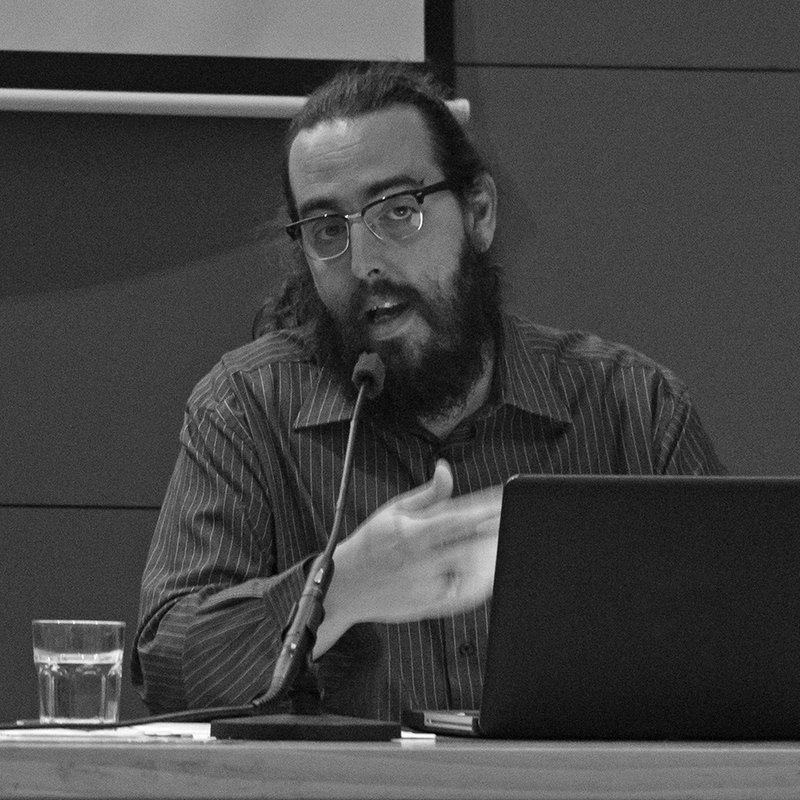Julio Cesar Vazquez

In 2022, 41 contemporary art curators, researchers, and museum directors from 24 different countries were awarded to attend the CIMAM 2022 Annual Conference. The CIMAM 2022 Annual Conference, titled "The Attentive Museum. Permeable Practices for a Common Ground", was held in Mallorca (Balearic Islands), Spain on 11–13 November, hosted by Es Baluard Museu d'Art Contemporani de Palma.
Julio Cesar's Conference Report
WHO ENGINES THE ENGINE
At the beginning of the North Hemisphere's summer, I applied to this travel grant with a motivational statement that started like this: Change moves the world and contemporary art can and must engine it. But, in that case, I forgot to mention who engines the engine. People around the world promoting their careers as contemporary art professionals move they aim to change the world by changing art institutions. For or against, from inside or outside, everybody agrees with the target of evolving both, museums and society. Many of them decided to enforce it at this CIMAM Annual Conference and I had the opportunity to be part of it.
My letter for applying to this grant continued: My art projects always turn around the aim of propitiating real and figurate stages that promote critical thinking and motivate attitudes for change to the audience. With that purpose, I employ art processes related to new media, political, social, and collaborative art, using intermediate spaces between museums and spectators, and attending host context by active listening. But in Palma, my path met with new colleagues who carry new models favorable for growing together. Future arranged collaborations with universities, alternative cultural centers, or international public art organizations, allow us to share and build these ways and also let me improve my career in new geographical and conceptual dimensions.
Throughout the conferences, the key, in my opinion, was Clementine Deliss who, during the second-day panels, argue about museums as civic institutions and against elitism and objects dictatorship in collections which are accumulating works of art with no other intention but to accumulate, opening the door, then, to real discussions. Her irreverence, daring, and decisiveness, show the way to materialize change that, otherwise, would not be possible in such stagnant institutions. Maybe because my theoretical mains (as I said when I applied): have usually been influenced by the artificial hells of Claire Bishop, the expanded fields of Rosalind Krauss, the white cube of Brian O'Doherty (to name a few), or even the attitudes becoming forms from Harald Szeemann, all postulates who maintain the tension among museums and the three side of the artistic fact: artists, audience and social context. In this sense, the second day was the “red pill” that woke us up to talk about real matters between art institutions and society, very well illustrated by Sandra Gamarra's decolonial body of work, at the only place that really included the social context from Palma during the whole conference, Esment.
And it was not until the last day, incorporating hybrid spaces like La Invisible with professionals working at real critical places, such as Lada Nakonechna (Ukraine) and Emily Jacir (Palestine), that authentic debate appears. Probably, as the result of previous panels, which began from over-institutionalized statism and an unprofitable first day to this third and very interesting last journey.
On the other hand, with the new annual conference on the horizon, the good relations and talks with Latin-American museums and institutions (Argentinian, principally), begin the seek for new travel grants fundings for independents curators to Buenos Aires, new headquarters, arranging already some words with some Argentinian art institutions during the stay in Palma.
Finally, in conclusion, I closed that motivation statement ensuring: know, learn, exchange, and implement new methods and models for a permeable practice from artistic and cultural institutions through social perspective, it's what moves my career. And now, after those days, I add: and persons who engine it.